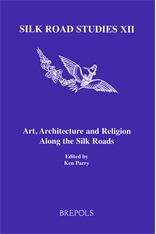In Central Asia today urbanization is slowing, but the challenges of managing cities and towns remain. Many countries have been transitioning to market economies for the past 20 years. Many need to meet persistent challenges of decaying and outmoded urban infrastructure, deteriorated communal housing, urban blight, and urban poverty.
Immediately after the transition to a market economy, housing policy reforms and land registration were top priorities in the region’s cities. Today, land registration programs and cadastres have matured, but ensuring maintenance and communal services for multifamily housing and promoting robust rental housing markets remain a priority for many cities.
Urban poverty remains a challenge for the region. Many elements of the safety net formerly provided by government, such as housing and public services, have sharply deteriorated. The effect on the urban population has been stark: while poverty has decreased in both rural and urban areas in Central Asia, the urban poor in the region are vulnerable to economic decline, especially in the aftermath of the recent financial crisis.
Improving urban management will entail strengthening local tax and revenue mobilization, providing more sustainable environmental services (including water and sanitation, solid waste management, and municipal energy efficiency), better land use planning, and improving municipal land and property markets.
As Central Asia cities transition from industrial to post-industrial economies, they need support for urban regeneration, including brownfield redevelopment. Drawing on lessons from more advanced countries, support could adapt urban revitalization approaches and transform unproductive land and property assets into new economic opportunities. Many cities aim for urban renewal that helps them become more sustainable and resilient to climate change.
With strong economic ties to the European Union, Central Asia economies have been hit hard by the recent economic downturn. Cities face severe fiscal constraints at a time of increased financing need. The region is exploring opportunities to generate urban employment through investments that will position city economies to exploit growth opportunities while addressing infrastructure backlogs. Several ongoing and planned operations target legal and regulatory framework reform, enhanced municipal performance, and gradual access to market-based finance.
Central Asia countries also have strong tourism potential. Preserving cultural heritage and establishing institutions to build a successful tourism market are powerful economic development tools. Cities and towns can use cultural tourism to preserve their historic cores while modernizing infrastructure and improving central business districts.

